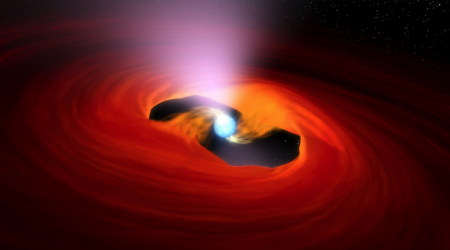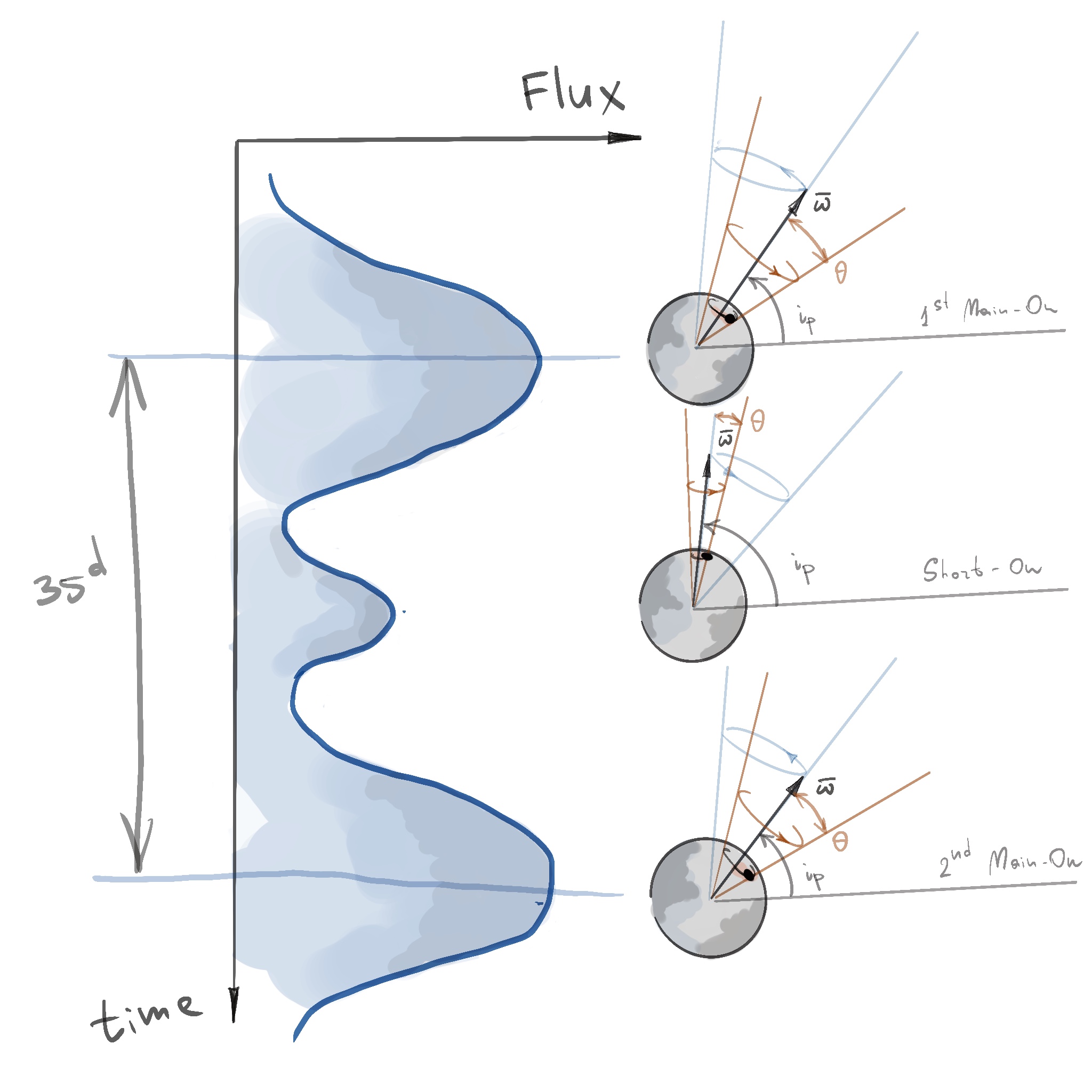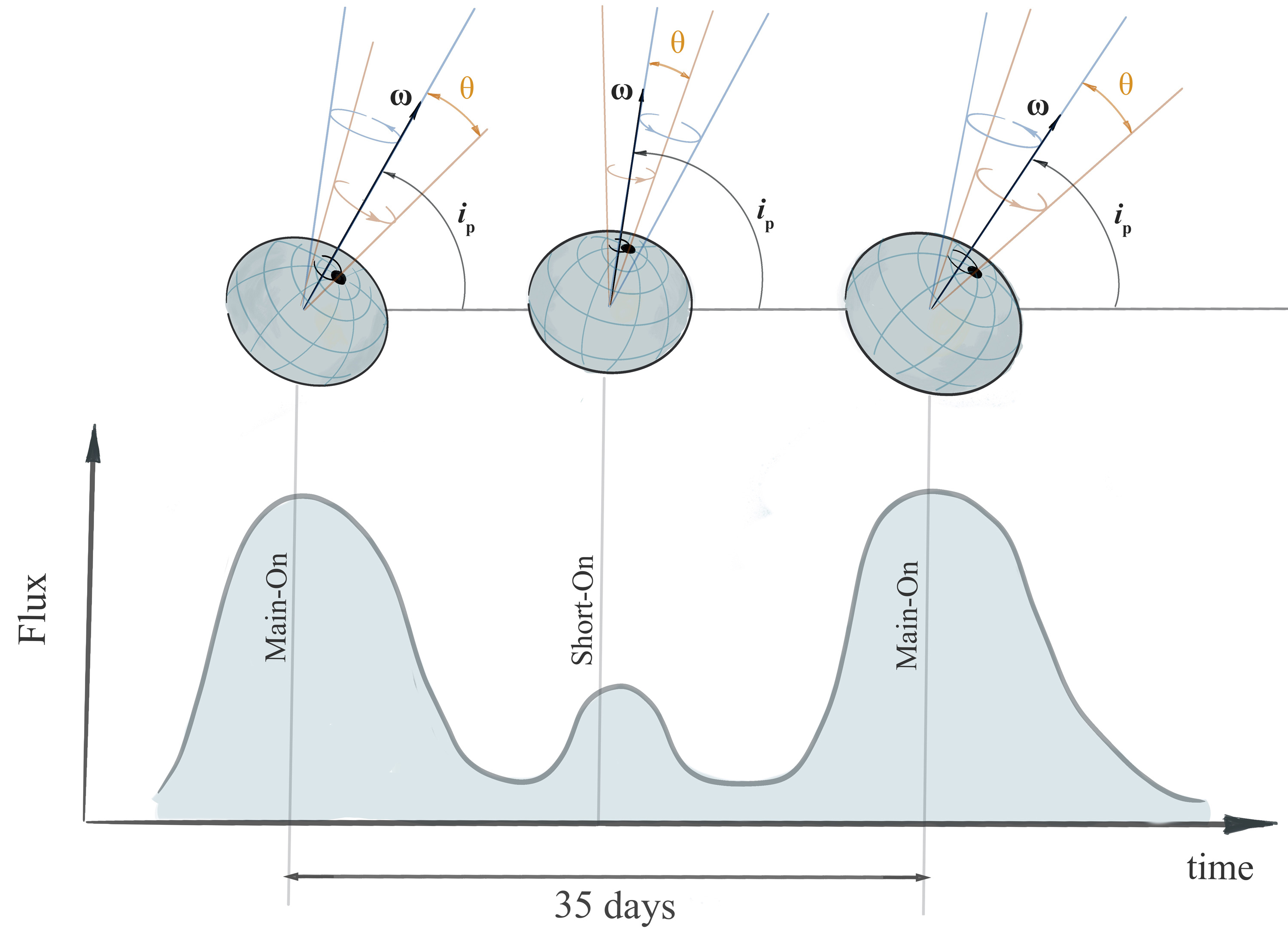IXPE Solves 50-Year-Old Mystery with a Wobbling Neutron Star

A version of this article was shared by Nature Astronomy, released on June 18, 2024.
The Department of Physics & Astronomy heartily congratulates Department Head and faculty member, Dr. Jeremy Heyl, for his role of lead author in the recently published article in the journal Nature Astronomy on the S-ray pulsar Hercules X-1.
The X-ray pulsar Hercules X-1 was the second to be discovered, and soon after its discovery scientists noticed that it would brighten and dim every 35 days like clockwork. The neutron star that powers this X-ray source spins every 1.2 seconds and strips matter from its companion that orbits it every 1.7 days, but scientists could not figure out what sets the 35-day clock, called the superorbital period. Apparently, the accretion disk blocks our view of the star every 35 days, but why 35 days? IXPE has discovered using observations of the polarization of the X-rays from Hercules X-1 that the neutron star crust itself wobbles on the same 35-day timescale.
Ever notice how even in an almost perfectly thrown spiral, the football wobbles a bit. Scientists call this wobble free precession, and it occurs because the football does not spin exactly around its axis of symmetry, so the spin axis wobbles around both from our point of view and across the surface of the football. For the football the wobble is pretty fast because the football is very asymmetric.
If the surface of Hercules X-1 is asymmetric by one part in 2.5 million, it too would wobble about once per 35 days. Because the surface of the star is nearly symmetric, we cannot detect the wobbling of the spin from our point of view as it is very small; however, the motion of the spin across the surface can be large,
According to Jeremy "Observations with IXPE show that the spin axis moves across the surface of the star several kilometers every 35 days. Neutron stars are only about 13 kilometers in radius, so this motion changes the X-ray polarization signature significantly." This wobble changes the strength of the forces between the neutron star and its accretion disk driving it to warp with the same period blocking our point of view of the pulsar.
In fact asymmetric neutron star crusts may be common. Charles Horowitz, a nuclear physicist at Indiana University who was not part of the IXPE team, says "Finding this large an ellipticity is consistent with molecular dynamics simulations that the neutron star crust is strong. Her X-1 spins too slowly to be detected in gravitational waves. However, faster spinning neutron stars with this ellipticity (or even a somewhat smaller one) might be detected soon with LIGO / VIRGO."
What makes Hercules X-1 special? Astronomers have measured the spins of thousands of neutron stars and tracked how they spin over decades using radio emission, but have not seen this free precession definitively. Surely, if neutron star crusts are somewhat asymmetric, they would all be wobbling a bit. It turns out that the picture is a bit more complicated. Like the football which is filled with air, the neutron star crust is filled with a fluid, and friction between the crust and this fluid makes the wobbling disappear in about a century, so unless something is forcing the crust to wobble, the wobble would vanish. In Hercules X-1 the accretion of material onto the star drives the wobble and keeps it going, and in fact the IXPE observations also revealed the hallmark of this forcing in a longer-term change in the spin axis of the star called forced precession. This slower wobbling perhaps cycles over a few years but its rate is determined by how much material is flowing onto the star right now, so it is not expected to be as regular as the superorbital period.
If accretion maintains the wobbling, perhaps other accreting neutron stars are doing something similar and in fact, many accreting neutron stars do have superorbital periods that vary from 30 to 160 days. Future IXPE observations will determine whether these neutron stars are wobbly as well.

Image credit: Figure 1 created by Alexander Mushtukov (https://muchtuko.com), Oxford, 2024

Image credit: Figure 2 created by Alexander Mushtukov (https://muchtuko.com), Oxford, 2024
Links
-
Access Dr. Jeremy Heyl's paper here: 'Complex rotational dynamics of the neutron star in Hercules X-1 revealed by X-ray polarization', Nature Astronomy June 18, 2024: : https://www.nature.com/articles/s41550-024-02295-8
Further Resources
- Find out more about Hercules X-1
- Learn more about the Imaging X-ray Polarimetry Explorer (IXPE)
- Watch a video showing a millisecond pulsar